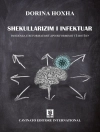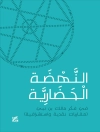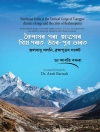In the
Second Edition of this bestselling textbook, the authors use real-world examples to introduce basic principles in statistics with no prior knowledge or experience assumed. With an emphasis on describing concepts, showing through example and illustrating points with graphs and displays, this book will provide readers with a step-by-step introduction to using statistics.
Chapters address the following questions:
- Why bother learning statistics in the first place and are they relevant to real life?
- How do I make sensible tables and informative graphs?
- What are descriptive and inferential statistics and how are they used?
- What are regression and correlation anyway?
Inhoudsopgave
Introduction: Are Statistics Relevant to Real Life?
Data and Table Manners
Graphs and Charts
Averages and Percentiles
Spreads
Transforming Data
The Normal Distribution
From Samples to Populations
Getting Confident
Fun with Proportions
How to Decide How to Decide
More Tricky Decisions
Correlation and Regression
Analysing Tables with Categorical Data
Conclusion
Appendix 1 Statistical Tables
Appendix 2 Answers to Practice Questions
Appendix 3 Algebra and Mathematical Notation Explained
Over de auteur
Julie is a demographer by background. After graduating in Population Studies from the University of Southampton in 1994, she worked as a Teaching Fellow in the Social Statistics department for over seven years. Julie’s main role was teaching social science undergraduates at Southampton both introductory statistics and population science courses, while completing a Ph D on childbearing following marital dissolution in Britain. The first edition of Beginning Statistics grew from several years of experience in teaching quantitative methods with Ian, both in huge lecture theatres and small tutorial groups, to students from a wide range of degree courses and with diverse abilities and initial levels of enthusiasm! Since 2002, Julie has worked on population figures at the Office for National Statistics. She is currently head of the Demographic Analysis Unit, which produces publications and research on the topics of childbearing, families, life expectancy and the ageing population. Julie is pleased to maintain links with the University of Southampton as part of this role. Julie is also a long-standing member of the British Society for Population Studies and currently sits on the BSPS Council. Julie has contributed to the second edition of Beginning Statistics in a personal capacity and not as an employee of ONS. In her spare time Julie enjoys adventure racing and climbing munros.












